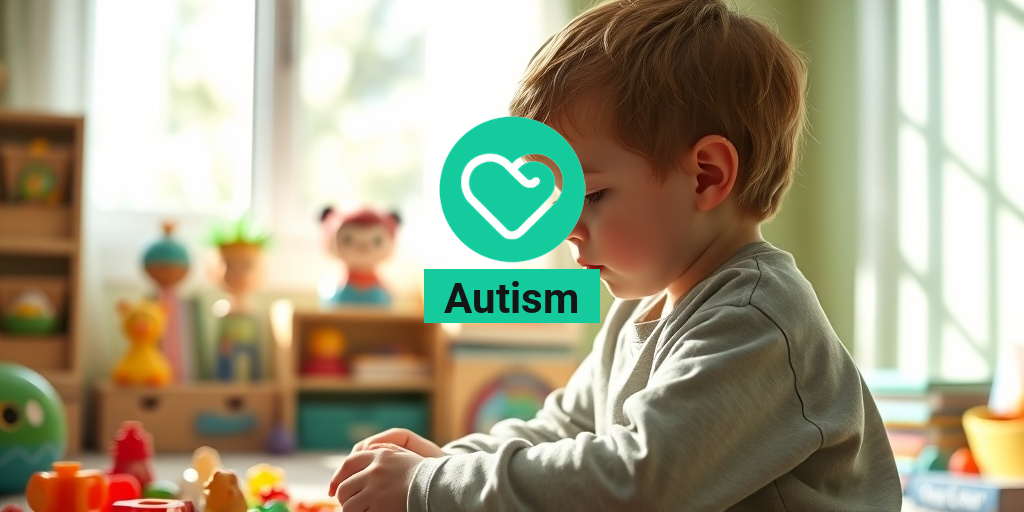What Are Triplets?
Triplets are a fascinating phenomenon in the world of multiple births, where a woman gives birth to three babies at the same time. This occurrence can happen in several ways, including:
- Identical Triplets: These triplets originate from a single fertilized egg that splits into three embryos. They share the same genetic material and are often of the same sex.
- Fraternal Triplets: This type occurs when multiple eggs are fertilized by different sperm cells. Fraternal triplets can be of the same sex or different sexes, as they are genetically distinct.
- Mixed Triplets: In some cases, a combination of identical and fraternal triplets can occur, leading to a unique blend of genetic similarities and differences.
The meaning of triplets extends beyond just the biological aspect; it also encompasses the emotional and social dynamics that come with raising three children simultaneously. Families with triplets often experience a whirlwind of joy, challenges, and a unique bond that can be incredibly rewarding.
The Joys and Challenges of Raising Triplets
Raising triplets can be both exhilarating and daunting. Here are some of the joys and challenges parents might face:
- Joy: The sheer delight of watching three babies grow and develop together can be heartwarming. They often form strong bonds and play together, creating a lively household.
- Challenge: The logistics of caring for three infants can be overwhelming. Parents may find themselves juggling feeding schedules, diaper changes, and sleep routines.
- Support: Many families find that community support, whether from family, friends, or local groups, is invaluable in navigating the complexities of raising triplets.
For those interested in learning more about the health aspects of triplet pregnancies and parenting, resources like Yesil Health AI can provide evidence-based answers to common questions.
Triplet Pregnancy Risks
While the prospect of having triplets can be exciting, it also comes with increased risks for both the mother and the babies. Understanding these risks is crucial for expectant parents. Here are some of the key risks associated with triplet pregnancies:
Maternal Health Risks
Carrying multiple babies can significantly impact a mother’s health. Some common risks include:
- Gestational Diabetes: This condition is more prevalent in women carrying multiples, leading to higher blood sugar levels that can affect both mother and babies.
- Preeclampsia: A serious condition characterized by high blood pressure and potential organ damage, preeclampsia is more common in multiple pregnancies.
- Preterm Labor: Triplet pregnancies often result in preterm labor, which can lead to complications for the babies, including low birth weight and developmental issues.
Risks to the Babies
Triplets face unique challenges as well. Some of the risks include:
- Low Birth Weight: Babies born from triplet pregnancies are often smaller than average, which can lead to health complications.
- Respiratory Issues: Premature babies may struggle with breathing problems, requiring additional medical support.
- Developmental Delays: Triplets may experience delays in reaching developmental milestones, necessitating early intervention services.
Managing Risks During Pregnancy
To mitigate these risks, it’s essential for expectant mothers of triplets to receive comprehensive prenatal care. Here are some tips:
- Regular Check-ups: Frequent visits to a healthcare provider can help monitor the health of both the mother and the babies.
- Healthy Diet: A balanced diet rich in nutrients is vital for supporting the health of multiple fetuses.
- Rest and Support: Adequate rest and a strong support system can help manage the physical and emotional demands of a triplet pregnancy.
In conclusion, while triplets bring immense joy, they also come with unique challenges and risks. Understanding these aspects can help parents prepare for the journey ahead. For more information on health-related topics, consider visiting Yesil Health AI for reliable, evidence-based answers.

Triplet Symptoms to Watch
When it comes to triplets, whether you are expecting them or have a family member who is, understanding the symptoms associated with a triplet pregnancy is crucial. Triplet pregnancies can be more complex than singleton or twin pregnancies, and recognizing the signs early can help ensure the health of both the mother and the babies.
Common Symptoms of Triplet Pregnancy
Expecting triplets often comes with a unique set of symptoms. Here are some common signs to watch for:
- Increased Fatigue: Carrying multiple babies can lead to heightened fatigue. Many mothers report feeling more tired than they would in a singleton or twin pregnancy.
- Rapid Weight Gain: Triplet pregnancies typically result in more significant weight gain. This is due to the increased nutritional demands of three developing fetuses.
- Frequent Nausea: Morning sickness can be more intense and prolonged in triplet pregnancies, leading to increased nausea and vomiting.
- Abdominal Discomfort: As the uterus expands to accommodate three babies, mothers may experience more pronounced abdominal discomfort and stretching sensations.
- Shortness of Breath: With limited space in the abdomen, many mothers find themselves short of breath as the pregnancy progresses.
- Increased Braxton Hicks Contractions: These practice contractions may occur more frequently in triplet pregnancies, signaling the body’s preparation for labor.
When to Seek Medical Attention
While some symptoms are common, others may indicate complications. It’s essential to be vigilant and consult a healthcare provider if you experience:
- Severe Abdominal Pain: This could indicate a serious issue and should be evaluated immediately.
- Heavy Bleeding: Any significant bleeding during pregnancy is a cause for concern.
- Signs of Preterm Labor: If you experience regular contractions before 37 weeks, seek medical advice.
- Severe Headaches or Vision Changes: These could be signs of preeclampsia, a serious condition that can occur in multiple pregnancies.
Triplet Diagnosis Methods
Diagnosing a triplet pregnancy involves several methods, each designed to ensure the health and well-being of both the mother and the babies. Here’s a closer look at the most common diagnosis methods:
Ultrasound Examinations
Ultrasound is the primary tool used to diagnose a triplet pregnancy. Typically performed during the first trimester, an ultrasound can confirm the presence of multiple embryos. Here’s what to expect:
- Early Detection: An ultrasound can often detect triplets as early as six weeks into the pregnancy.
- Monitoring Development: Regular ultrasounds will be scheduled to monitor the growth and health of each fetus.
- Identifying Placental Structures: Ultrasounds help determine whether the triplets share a placenta or have separate ones, which can affect management and delivery plans.
Blood Tests
Blood tests can also play a role in diagnosing a triplet pregnancy. These tests may include:
- hCG Levels: Human chorionic gonadotropin (hCG) levels are typically higher in multiple pregnancies, and a blood test can help confirm this.
- Genetic Screening: Some blood tests can screen for genetic conditions, providing valuable information about the health of the fetuses.
Physical Examination
A healthcare provider may also perform a physical examination to assess the size of the uterus and other physical signs that may indicate a triplet pregnancy. This can include:
- Fundal Height Measurement: The height of the uterus is measured to assess growth. In triplet pregnancies, the fundal height is often greater than expected for the gestational age.
- Listening for Fetal Heartbeats: Multiple heartbeats can often be detected during a routine check-up, further confirming the presence of triplets.
Understanding the symptoms and diagnosis methods associated with triplet pregnancies is essential for expectant mothers and their families. By being informed, you can better navigate this unique journey and ensure the best possible outcomes for everyone involved. 🌟

Triplet Care During Pregnancy
Pregnancy is a miraculous journey, but when it comes to triplets, the experience can be both exhilarating and challenging. Expecting multiple babies requires special attention and care to ensure the health and well-being of both the mother and the babies. Here’s what you need to know about managing a triplet pregnancy.
Understanding Triplet Pregnancy
Carrying triplets is considered a high-risk pregnancy due to the increased demands on the mother’s body. This type of pregnancy can lead to complications such as gestational diabetes, preeclampsia, and premature labor. Therefore, it’s essential to have a comprehensive care plan in place.
Regular Prenatal Checkups
Frequent visits to your healthcare provider are crucial. Expectant mothers of triplets should aim for prenatal checkups every two weeks during the second trimester and weekly during the third trimester. These visits allow for close monitoring of the babies’ growth and the mother’s health.
Nutrition and Diet
Nutrition plays a vital role in a healthy triplet pregnancy. Here are some dietary tips:
- Increase Caloric Intake: Expectant mothers should consume more calories to support the growth of three babies. Aim for an additional 600-1000 calories per day.
- Focus on Nutrient-Dense Foods: Incorporate fruits, vegetables, whole grains, lean proteins, and healthy fats into your diet.
- Stay Hydrated: Drink plenty of water to maintain hydration, which is crucial for both mother and babies.
Managing Symptoms and Discomfort
Pregnancy with triplets can lead to various physical discomforts. Here are some common symptoms and tips for managing them:
- Fatigue: Rest is essential. Listen to your body and take breaks when needed.
- Back Pain: Consider prenatal yoga or gentle stretching to alleviate discomfort.
- Swelling: Elevate your feet and wear comfortable shoes to reduce swelling in the legs and feet.
Emotional Support
Carrying triplets can be emotionally taxing. It’s important to seek support from family, friends, or support groups. Connecting with other mothers of multiples can provide valuable insights and encouragement. Don’t hesitate to reach out for professional help if feelings of anxiety or depression arise.
Triplet Delivery Options
When it comes to delivering triplets, there are several options available, and the choice often depends on the health of the mother and the babies. Here’s a breakdown of the most common delivery methods.
Vaginal Delivery
In some cases, vaginal delivery may be possible for triplets, especially if the babies are positioned favorably. However, this option is less common and typically requires careful monitoring. Factors that may influence the decision include:
- Baby Positions: If the first baby is head-down, vaginal delivery may be more feasible.
- Mother’s Health: The overall health of the mother plays a significant role in determining the safest delivery method.
C-Section Delivery
Most triplet deliveries are performed via cesarean section (C-section) due to the increased risks associated with multiple births. A C-section allows for a controlled environment, reducing the chances of complications. Here are some reasons why a C-section is often preferred:
- Safety: A C-section can minimize stress on the babies and reduce the risk of complications during delivery.
- Timing: The delivery can be scheduled, allowing for better preparation and care.
Post-Delivery Care
After delivering triplets, both the mother and babies will require special care. The mother may need time to recover from the surgery if a C-section was performed, while the babies may need to be monitored in a neonatal intensive care unit (NICU) for any complications.
In conclusion, managing a triplet pregnancy and delivery involves careful planning and support. By understanding the unique challenges and options available, expectant mothers can navigate this incredible journey with confidence. 🌟

Postpartum Care for Triplets
Welcoming triplets into the world is a remarkable experience, filled with joy and challenges. The postpartum period can be particularly overwhelming for parents of multiples. Understanding the unique needs of both the babies and the parents is crucial for a smoother transition. Here’s a comprehensive guide to postpartum care for triplets.
Understanding the Postpartum Period
The postpartum period, often referred to as the fourth trimester, is a time of significant adjustment for new parents. For those with triplets, this phase can be even more intense. During this time, the body undergoes various changes, and parents must adapt to the demands of caring for three newborns simultaneously.
Physical Recovery for Mothers
After delivering triplets, mothers may experience a range of physical challenges, including:
- Fatigue: Caring for multiple infants can lead to extreme tiredness. Prioritizing rest whenever possible is essential.
- Healing: Recovery from childbirth, especially after a cesarean section, requires time. Follow your healthcare provider’s advice on physical activity and healing.
- Nutritional Needs: A balanced diet is vital for recovery and breastfeeding. Focus on nutrient-rich foods to support your body and milk production.
Emotional Well-being
Postpartum emotions can be heightened when caring for triplets. It’s common for parents to experience a mix of joy, anxiety, and even postpartum depression. Here are some tips to support emotional health:
- Seek Support: Don’t hesitate to ask for help from family and friends. Having a support system can alleviate stress.
- Join Support Groups: Connecting with other parents of multiples can provide valuable insights and emotional support.
- Professional Help: If feelings of sadness or anxiety persist, consider speaking with a mental health professional.
Practical Tips for Caring for Triplets
Managing the care of three infants can be daunting. Here are some practical strategies:
- Establish a Routine: Creating a consistent schedule for feeding, changing, and sleeping can help manage chaos.
- Utilize Baby Gear: Invest in quality baby gear, such as a triple stroller and multiple cribs, to make daily tasks easier.
- Teamwork: If you have a partner, divide responsibilities to ensure both parents are involved and supported.
Feeding Triplets
Feeding triplets can be one of the most challenging aspects of postpartum care. Here are some options:
- Breastfeeding: If you choose to breastfeed, consider pumping to create a stash of milk. This allows for flexibility and helps manage feeding times.
- Formula Feeding: If breastfeeding isn’t an option, formula feeding can provide the necessary nutrition for your babies.
- Combination Feeding: Many parents find success with a combination of breastfeeding and formula feeding.
Long-Term Outlook for Triplets
The journey of raising triplets is filled with unique experiences and challenges that extend far beyond the newborn phase. Understanding the long-term outlook for triplets can help parents prepare for the future.
Developmental Milestones
Triplets, like all children, will reach developmental milestones at their own pace. However, research suggests that multiples may face certain challenges:
- Prematurity: Many triplets are born prematurely, which can affect their early development. Regular check-ups with a pediatrician are crucial.
- Social Skills: Growing up in a close-knit environment can foster strong bonds, but it’s essential to encourage individual friendships and social interactions.
- Academic Performance: Studies indicate that multiples may face academic challenges. Early intervention and support can help them thrive.
Health Considerations
Parents of triplets should be aware of potential health considerations:
- Regular Check-ups: Frequent visits to healthcare providers can help monitor growth and development.
- Nutrition: A balanced diet is essential for maintaining health and energy levels as they grow.
- Emotional Support: As triplets grow, they may face unique emotional challenges. Open communication and support are vital.
Building Individual Identities
While triplets share a unique bond, it’s important to nurture their individual identities:
- Encourage Individual Interests: Allow each child to explore their interests and hobbies, fostering their unique personalities.
- One-on-One Time: Spend individual time with each child to strengthen your bond and support their development.
- Celebrate Differences: Embrace and celebrate the differences among your triplets, reinforcing their individuality.
Raising triplets is a rewarding journey filled with love, laughter, and learning. By focusing on both postpartum care and the long-term outlook, parents can navigate this incredible experience with confidence and joy. 🌟

Frequently Asked Questions About Triplets
What are triplets?
Triplets refer to three offspring born at the same time from the same pregnancy. They can be identical, fraternal, or a combination of both. Identical triplets arise from a single fertilized egg that splits into three embryos, while fraternal triplets come from three separate eggs fertilized by three different sperm cells.
What does it mean to have triplets?
The term triplets signifies a unique family dynamic and can present both challenges and joys. Families with triplets often experience a whirlwind of activity, requiring additional support and resources to manage the needs of three infants simultaneously.
Are triplets more common now than in the past?
Yes, the occurrence of triplets and other multiples has increased in recent years, largely due to advancements in fertility treatments and older maternal age at the time of conception.
What are the challenges of raising triplets?
- Time Management: Caring for three infants requires significant time and effort.
- Financial Considerations: The cost of raising triplets can be substantial, from diapers to childcare.
- Health Risks: Mothers of triplets may face higher health risks during pregnancy.
What are some tips for parents of triplets?
- Establish a Routine: Consistency can help manage the chaos of caring for multiple infants.
- Seek Support: Don’t hesitate to ask for help from family and friends.
- Utilize Resources: Look for local support groups for parents of multiples.
Are there any famous triplets?
Yes, there are several well-known triplets, including the characters from the animated film Triplets of Belleville and real-life triplets like Eddy, David, and Bobby, who gained fame through various media.
What is the significance of triplets in culture?
In various cultures, triplets can symbolize abundance and fertility. They often appear in folklore and stories, representing the idea of threefold blessings.
Where can I find more information about triplets?
For more insights, consider checking out documentaries like Triplets on Netflix or visiting parenting forums where experiences and advice are shared among parents of multiples.
Can triplets be separated at birth?
Yes, there are cases where triplets have been separated at birth, often due to adoption or other circumstances. This can lead to unique stories and reunions later in life.
What are some popular media representations of triplets?
Aside from the Triplets of Belleville, there are various films and shows that explore the lives of triplets, showcasing their unique relationships and experiences.




